 Lead Pipe Replacement
Lead Pipe Replacement
Lead pipe replacement is essential to eliminate health risks from drinking water. The water company is responsible for pipes running up to the property boundary, while homeowners are responsible for pipes within that boundary. This article explains what lead pipes are, their dangers, how to identify them, and the steps for replacement.
Key Takeaways
- Lead pipes pose significant health risks, especially to vulnerable populations such as children and pregnant women, necessitating strict regulation and replacement efforts.
- Homeowners are responsible for the maintenance and replacement of lead pipes within their properties, while utility companies handle external communication pipes, highlighting the need for collaboration.
- Flushing taps and using certified water filters provide interim solutions to reduce lead levels in drinking water while awaiting the installation of new piping systems.
- Use cold water directly from the kitchen tap for drinking and cooking to reduce lead exposure. Run the cold water for a duration before consumption to minimise potential contaminants, especially in properties with lead pipes.
Understanding Lead Pipes and Their Risks
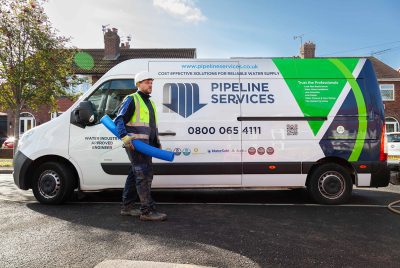 Lead pipes have been a part of our infrastructure for centuries, historically used in petrol, paint, and water pipes due to their durability and malleability. However, the dark side of lead usage lies in its toxicity. Lead poisoning occurs when lead accumulates in the body, often through drinking water that has absorbed lead from pipes or fittings. This is particularly dangerous for infants and young children, who can absorb lead more readily than adults, leading to severe health issues like developmental delays, irritability, and fatigue.
Lead pipes have been a part of our infrastructure for centuries, historically used in petrol, paint, and water pipes due to their durability and malleability. However, the dark side of lead usage lies in its toxicity. Lead poisoning occurs when lead accumulates in the body, often through drinking water that has absorbed lead from pipes or fittings. This is particularly dangerous for infants and young children, who can absorb lead more readily than adults, leading to severe health issues like developmental delays, irritability, and fatigue.
Adults are not immune to these dangers. Symptoms of lead exposure in adults can include high blood pressure, joint pain, and memory loss. Vulnerable groups, such as pregnant women, face additional risks, as lead exposure can harm both the mother and the developing fetus. Even small amounts of lead in water can lead to harmful accumulation in the body, particularly for these vulnerable groups.
Given these severe health implications, strict water regulations now govern the maximum allowable levels in drinking water, underscoring the importance of addressing lead pipework in older properties. It is essential to ensure that every drink is safe.
Identifying Lead Pipes in Your Home
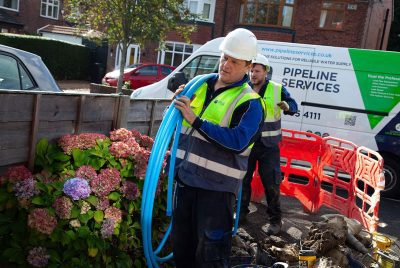 The first step towards safer drinking water is identifying lead pipes in your home. Unpainted lead pipes typically have a dull grey appearance, and you may notice swelling at the joints. If you gently scrape an unpainted lead pipe with a coin, it will reveal a shiny, silver-coloured metal underneath. Additionally, lead pipes produce a dull thud when tapped, unlike the clear ring of copper pipes or iron pipes.
The first step towards safer drinking water is identifying lead pipes in your home. Unpainted lead pipes typically have a dull grey appearance, and you may notice swelling at the joints. If you gently scrape an unpainted lead pipe with a coin, it will reveal a shiny, silver-coloured metal underneath. Additionally, lead pipes produce a dull thud when tapped, unlike the clear ring of copper pipes or iron pipes.
The best place to check for lead pipework is where the water supply enters your home, often near the internal stop tap and internal pipes. To verify externally, open the external stop tap cover outside your property. Then, check the visible pipes. Maintaining a safe plumbing system and protecting your family’s health starts with ensuring your home is free from lead pipes.
Testing for Lead in Drinking Water
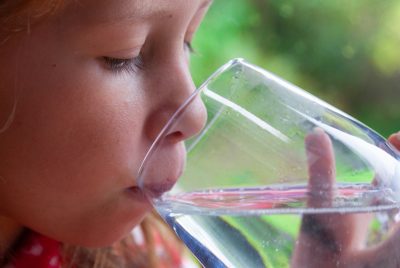 Testing for lead in drinking water is particularly important if you live in an older home with outdated plumbing. One effective way to reduce lead levels is by flushing your taps for a few minutes before use, which helps remove stagnant water that may have absorbed lead from the pipes. Use only cold tap water for drinking and cooking because hot water can dissolve more lead from the pipes and increase contamination.
Testing for lead in drinking water is particularly important if you live in an older home with outdated plumbing. One effective way to reduce lead levels is by flushing your taps for a few minutes before use, which helps remove stagnant water that may have absorbed lead from the pipes. Use only cold tap water for drinking and cooking because hot water can dissolve more lead from the pipes and increase contamination.
Additionally, it is recommended to flush the cold kitchen tap for a couple of minutes to ensure the water is safe for drinking and cooking, especially after any work has been done that may have affected the plumbing system.
If tests reveal lead in your water, consider installing certified water filters that are specifically designed to remove lead. These filters provide a temporary but effective solution to ensure safer drinking water while you work on replacing your lead pipes.
Regular test and proactive steps can greatly reduce the risks of lead exposure.
Responsibilities for Lead Pipe Replacement
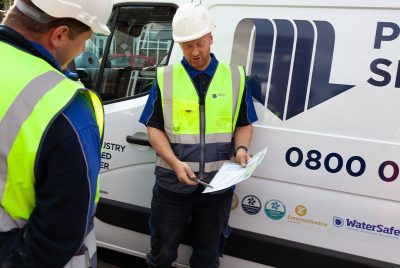 Homeowners need to understand who is responsible for lead pipework. Generally, utility companies are responsible for replacing the lead pipework they own, which typically extends to the water main. However, homeowners are accountable for the plumbing systems within their properties, including the service pipe that connects their home to the utility’s system. This division of responsibility often depends on the location of the pipework relative to the property boundary.
Homeowners need to understand who is responsible for lead pipework. Generally, utility companies are responsible for replacing the lead pipework they own, which typically extends to the water main. However, homeowners are accountable for the plumbing systems within their properties, including the service pipe that connects their home to the utility’s system. This division of responsibility often depends on the location of the pipework relative to the property boundary.
Homeowners must verify their ownership and responsibility as a property owner for any existing lead pipes within their property. They must maintain their pipes and ensure replacement if lead is found.
Utility companies, on the other hand, handle the replacement of communication pipes from the water main to the stop valve outside the property. Clear understanding and collaboration between homeowners and utility companies is essential.
Homeowner Responsibilities
Homeowners play a critical role in the replacement of lead pipes. They must be proactive in assessing and maintaining the plumbing systems within their properties to ensure lead pipes are replaced. This responsibility includes the internal pipework and shared supply pipes that serve their property, ranging from the stop valve to the pipes inside the house.
If lead pipes are identified, homeowners must arrange their removal through an approved plumber. It is advisable to obtain several quotations from qualified plumbers before proceeding with the lead pipes replaced to ensure a fair and accurate assessment of the work required. An approved plumber should provide a certificate for the work they have carried out.
These actions will help protect everyone’s health in the household.
Utility Company Responsibilities
Utility companies also have significant responsibilities when it comes to lead supply pipe. Their accountability typically extends to the communication pipe from the water main to the stop valve outside the property. They do not, however, replace internal plumbing within properties.
Utility companies also take specific actions at their treatment works to condition the water and reduce lead levels, ensuring compliance with regulatory standards for drinking water safety.
When lead is found in the water supply, utility companies offer guidance and written advice on the required actions. They can also be contacted to arrange testing for lead content in household water.
This teamwork ensures that homeowners and utility companies address and minimize lead contamination effectively.
Steps to Replace Lead Pipes
Replacing lead pipes involves multiple steps requiring careful planning and execution. Qualified plumbers must carry out specific tasks safely during the replacement process to ensure safety and regulatory compliance. During the replacement process, safety measures such as road traffic signs and barriers will be installed to ensure the safety of workers and residents.
Once a date for the pipe installation is agreed upon, a new connection will be delivered, which needs to be signed and returned. This formal agreement sets the stage for the replacement work, ensuring all parties understand their roles and responsibilities.
Assessing Your Current Pipework
Assessing your current pipework is crucial before starting the replacement process. Check the outside stop valve and your property’s plumbing arrangement to verify the presence of lead pipes. Inspector verification of property suitability is also required to replace external lead pipework.
Historically, lead pipework was commonly used to connect properties to the mains water network. Recognizing the health risks associated with lead exposure is important, especially since older properties may still contain these pipes, necessitating replacement or remediation efforts to ensure safe drinking water.
Qualified professionals can thoroughly assess your lead supply pipe conditions and guide you on the necessary replacement steps. Notifying your water company about the new supply pipes and lead pipe replacement can also facilitate a smoother process.
Choosing a Qualified Plumber
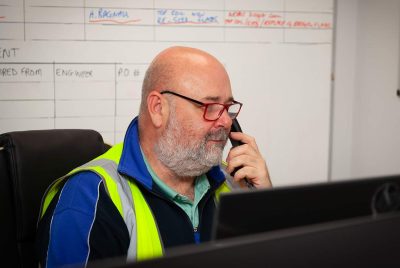 It’s crucial to choose a qualified plumber for replacing lead pipework. Homeowners can choose between independent or approved plumbers, but hiring a WIAP-approved contractor is recommended. These plumbers are listed on WaterSafe’s website, ensuring they meet industry standards.
It’s crucial to choose a qualified plumber for replacing lead pipework. Homeowners can choose between independent or approved plumbers, but hiring a WIAP-approved contractor is recommended. These plumbers are listed on WaterSafe’s website, ensuring they meet industry standards.
Using lead solder in drinking water systems poses significant risks as lead can leach into the water, leading to contamination. It is essential to use approved plumbing methods to prevent such hazards.
An approved plumber should provide a certificate regarding the work they performed, offering peace of mind about the quality and compliance of the inspection and the replacement. This certification is essential for maintaining the integrity of your plumbing system and ensuring safe drinking water.
Applying for Lead Pipe Replacement Schemes
Lead pipe replacement schemes can alleviate the financial and logistical challenges of replacing lead pipes. Residents can apply if their property was built before 1970 and contains lead pipework. The application process involves filling out an online form and registering even if immediate work cannot be completed as part of the lead replacement scheme.
It is important to verify whether a property has a single supply or a shared supply when applying for the scheme.
Reducing Lead Levels in Drinking Water While Awaiting Replacement
Reducing lead levels in drinking water is crucial while awaiting lead pipe replacement to minimize health risks. Flushing taps helps lower levels by removing stagnant water that may contain lead from the pipes. This simple practice can make a big difference in water safety.
Water companies also use orthophosphate to reduce lead levels by forming protective barriers inside lead pipes. These interim solutions are essential for minimizing lead exposure and ensuring safer drinking water while awaiting permanent pipe replacement.
Flushing Taps Before Use
Flushing taps before use effectively reduces lead levels in drinking water. Running the kitchen tap for a minute helps flush out any standing water that may contain lead. This practice is especially important for cold kitchen sink taps, which are frequently used for drinking and cooking.
When flushing taps, consider checking for the internal stop tap in the downstairs toilet, as it is often located in or behind cupboards there, especially when checking for lead pipes.
Consider using the runoff for the garden or houseplants to make the most of this water. This not only conserves water but also ensures that the flushed water is put to good use, promoting an eco-friendly approach.
Installing Water Filters
Certified water filters offer another effective interim solution for reducing lead levels in drinking water. These filters can remove lead, providing a temporary but reliable solution until lead pipes can be replaced.
When selecting a filter, ensure it is certified specifically for lead removal to guarantee efficacy and safety. Certified filters are crucial as they can remove lead from various sources, including lead-based solder, which is sometimes illegally used to join sections of copper pipes. This proactive measure can significantly reduce lead exposure and provide peace of mind about the water quality in your home.
Pipeline Services Lead Pipework Experts
 Pipeline Services mitigates health risks from lead contamination in drinking water through effective lead pipe replacement. With over 25 years of experience, the company has established itself as a leader in the industry, utilising advanced technology and adhering to high professional standards to ensure the safety and reliability of their solutions.
Pipeline Services mitigates health risks from lead contamination in drinking water through effective lead pipe replacement. With over 25 years of experience, the company has established itself as a leader in the industry, utilising advanced technology and adhering to high professional standards to ensure the safety and reliability of their solutions.
It is crucial to be aware of the illegal use of lead-based solder in drinking water systems, as improper plumbing practices by unqualified individuals can introduce lead into water supplies, posing significant health risks.
Pipeline Services offers a comprehensive range of services, including lead supply pipe replacement, leak detection, and emergency repairs, to cater to diverse customer needs. Their status as a Water Industry Approved Contractor further underscores their commitment to quality and safety in all operations.
Comprehensive Services Offered
Pipeline Services addresses various aspects of water supply and safety through a variety of services. Their services include:
- Lead pipe replacement
- Water supply pipe installation
- Leak detection
- Water mains replacement
- Emergency repairs
- Installation of plastic pipes as an alternative to lead pipes
Their holistic approach ensures that customers receive tailored solutions that meet their specific needs.
As a Water Industry Approved Contractor, Pipeline Services adheres to strict professional standards, guaranteeing quality and reliability in their operations. Their use of advanced technology for precise leak detection and efficient emergency call-outs further enhances their service offerings, ensuring that customers receive the best possible care.
Why Choose Pipeline Services?
Opting for Pipeline Services means choosing experience, expertise, and reliability. With over 25 years of experience, the company possesses the knowledge and skills to handle complex lead pipe replacement projects. Their status as a Water Industry Approved Contractor reflects their commitment to maintaining high-quality standards in all their services.
It is crucial to address the risks associated with lead-based solder in pipes carrying drinking water, as it can lead to lead contamination in the water supply.
Moreover, Pipeline Services employs advanced technology in their pipe replacement solutions, ensuring efficiency and reliability. Recognised as the leading provider of water supply pipe installations and repairs in the UK, Pipeline Services offers unmatched expertise and a proven track record of success.
How to Get Started with Pipeline Services
Starting with Pipeline Services is straightforward and hassle-free. The first step is to contact us through our provided contact number or email for consultations or quotes. Prompt action to replace lead pipes ensures safe drinking water and reduces health risks.
It is crucial to use proper plumbing methods to join sections of pipes to prevent lead contamination. Lead-based solder should never be used to join sections of copper pipes that carry drinking water, as it can introduce harmful lead into the water supply.
Initiating the process with Pipeline Services significantly improves your home’s water quality and safeguards your family’s health. With their comprehensive range of services and expertise, Pipeline Services ensures a smooth and efficient pipe replacement process.
Contacting Pipeline Services
Contact Pipeline Services via our phone number, 0800 065 4111, or email sales@pipelineservices.co.uk. Our team is ready to assist you with any questions or concerns regarding lead supply pipe replacement.
It is crucial to check the water pipe that enters your home for lead to ensure safety and compliance with health standards.
For consultations or detailed quotes, Pipeline Services’ customer support will guide you through the process, ensuring you receive all necessary information and assistance.
What to Expect During the Process
Deciding to proceed with Pipeline Services involves first signing a formal agreement for the installation work. This contract outlines all the details of the project, ensuring clarity and mutual understanding between both parties. Once the agreement is signed, the work installation will be planned and scheduled.
Pipeline Services is located at Clearwater House, Newby Road Industrial Estate, Hazel Grove, Stockport SK7 5DA. Our strategic location ensures they can cover projects nationwide, providing efficient and reliable services to clients across the UK.
Summary
In summary, lead pipework replacement is crucial for ensuring safe drinking water and protecting your family’s health. Understanding the risks associated with lead pipes, identifying them in your home, and knowing your responsibilities are the first steps towards safer water. It is important to recognise the connection between lead pipes and the mains water network, as many older properties may still have lead plumbing despite bans on such materials. By following the detailed steps for replacement and taking interim measures to reduce lead levels, you can significantly minimise health risks.
Choosing Pipeline Services for your lead pipework replacement needs guarantees expertise, reliability, and comprehensive support. With over 25 years of experience and a commitment to quality, Pipeline Services stands out as the leading provider in the UK. Take action today to ensure the safety and quality of your drinking water.
Get in touch
To find out more about the services we provide, please get in touch.
Call free on: 0800 065 4111
(Calls are recorded for training and monitoring purposes)
Pipeline Services
Clearwater House,
Newby Road Industrial Estate,
Hazel Grove,
Stockport,
SK7 5DA

 Lead Pipe Replacement
Lead Pipe Replacement

